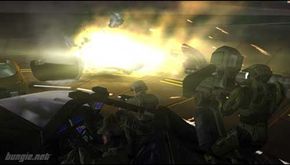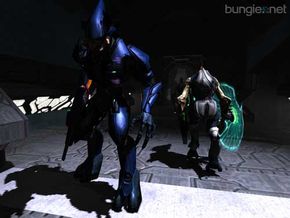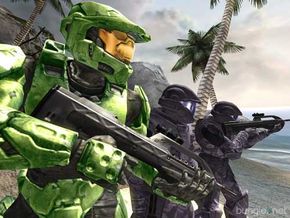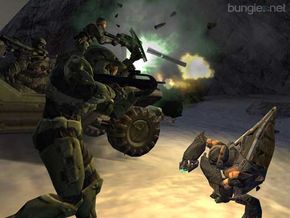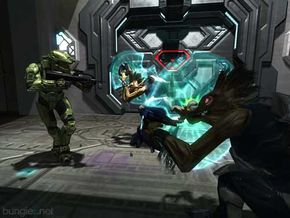Are you tired of getting whipped by the Covenant? Learn how they think from the man who created the artificial intelligence for "Halo 2." In this exclusive Stuffo interview, Chris Butcher of Bungie Studios enlightens us.
11/17/04
Advertisement
So here I am ... surrounded by pizza boxes, soft taco wrappers, and soda cans and controllers. I'm tired, and I smell bad. I've finally beaten "Halo 2." I've been ambushed, sniped, flushed out, cornered and just plain beat down by the Covenant more times than I care to remember. In both "Halo" and "Halo 2," the enemy's battlefield savvy is one of the most impressive aspects of the game. The enemies are so much more than just an onslaught of fodder. This is not your daddy's shooter. If you think that a quick trigger finger is going to let you plow through the Covenant in "Halo 2," then there is a body bag with your name on it.
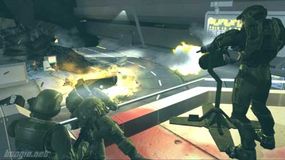
The enemy characters in "Halo," as with all video games, are driven by artificial intelligence or AI. The complexity of the AI can often make or break a game's level of fun, realism and replay value. Halo is at the top of list when it comes to AI. The enemies react, respond and adapt to the player like real combatants on a battlefield.
If you're amazed by just how "dirty" the Covenant's "dirty pool" can get in the heat of battle, then you will be interested to hear what Chris Butcher had to say about the artificial intelligence of "Halo 2." Chris is one of four Engineering Leads at Bungie Studios, who are each responsible for certain sections of Halo's creation. Chris created the AI for the original "Halo" and got to expand his work in "Halo 2." Stuffo got a chance to sit down with Chris a few days before "Halo 2" launched and talk about the artificial intelligence of "Halo 2."
Advertisement

